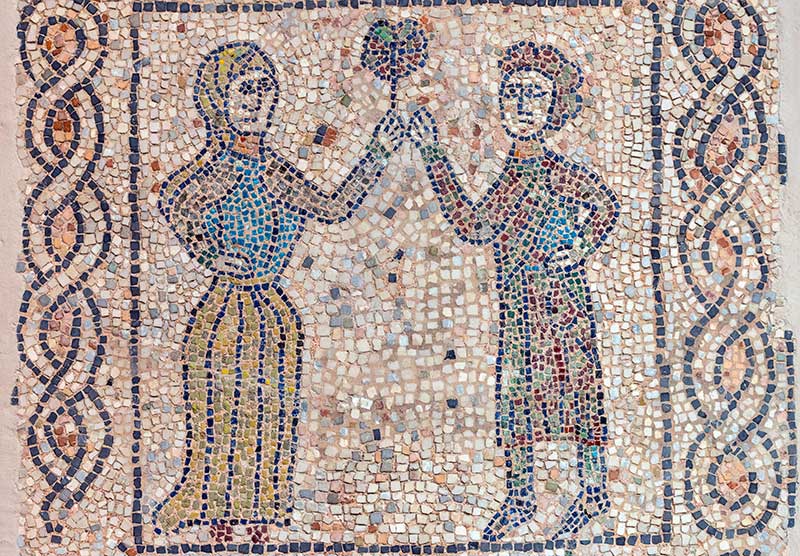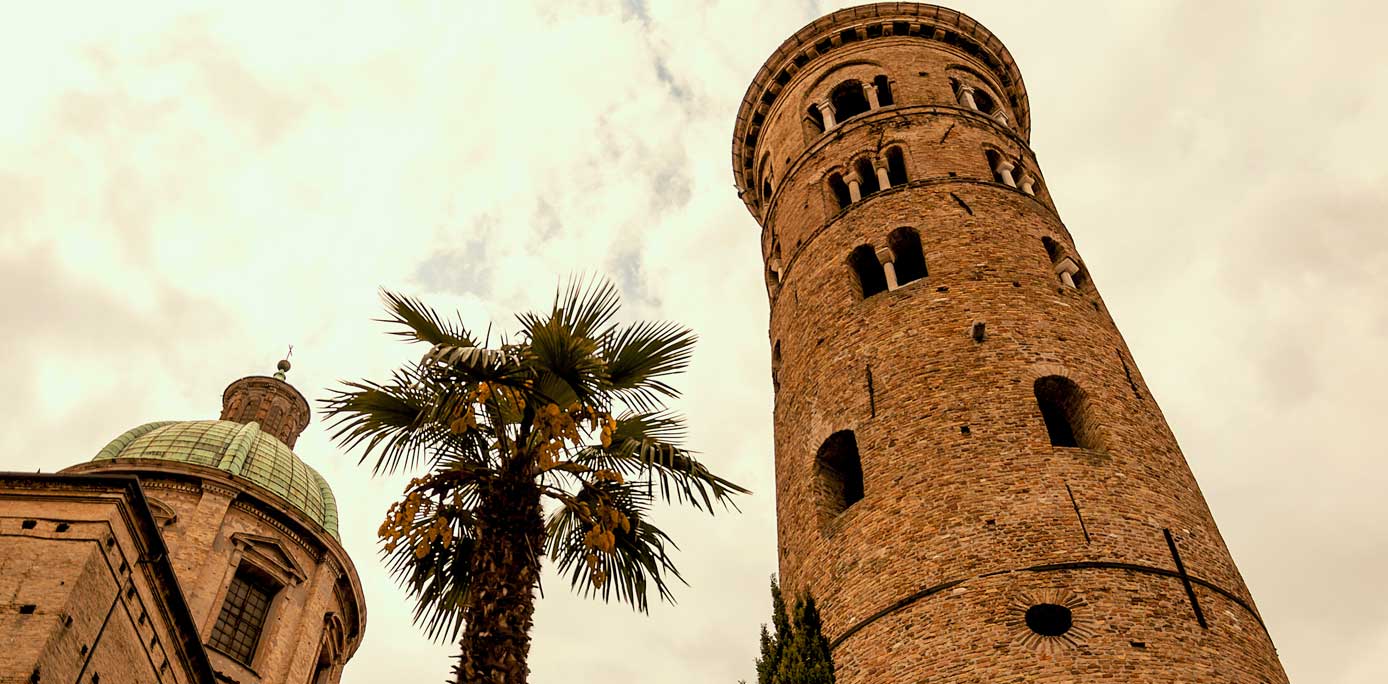I’m not a great fan of the fantasy genre — exception made for a recently discovered love for the Harry Potter saga: yes, I know. I come about 20 years late — but who doesn’t know about J.R.R. Tolkien? Add to the mix I did dabble in the world of Old English while doing my Medieval Studies MA, and the presence of the popular linguist and author in my life ended up being more conspicuous than my personal literary tastes may have hinted at.

Ravenna is known as the city of mosaics because of the stunning 5th-6th-century mosaics that decorate the walls of its churches and monuments
A beautiful translation of Beowulf, he made.
But The Lord of the Ring saga? Not my cup of tea. At least until I found out something that tickled the interest of the historian in me: the potential link between the geography of Middle Earth and the Italian town of Ravenna. Now, before writing anything further, let’s say one or two words about Ravenna itself: you see, we Italians fill with pride and a tad of reverent respect when we hear its name because there — not in Florence, not in Rome: there — lie the mortal remains of our Poet, our Dante, the father of the Italian language.
Standing in front of his tomb is an experience many an Italian teen have experienced during one of those mid-Spring school trips where first loves blossom and night time secrets are revealed, while hiding under the scratchy sheets of two stars, all-included hotels. And you can bet there was a lot of anger, in that moment, thinking of all the hours spent studying because of him, but also a good deal of respect.

According to Tolkien’s handwritten notes of Middle Earth map’s sketch, the city of Minas Tirith was inspired by Ravenna © GoneWithTheWind | Dreamstime.com
Dante, Alas! You steal my thoughts: it is of Tolkien we must write today. Ravenna, we were saying: how do we know the author had it in mind when describing and creating Middle Earth? Well, it all goes back to people’s habit to hide random pieces of papers in books and to authors’ just as common habit to annotate anything related to their work. As most Tolkien fans probably know, Middle Earth was more than a simple idea described in words, it existed in the form of a map: a map that Tolkien had conceived in 1970 with illustrator Pauline Baynes for The Lord of the Rings’ edition published by Allen and Unwin. Baynes was an already famous artist when she was commissioned the job, as she had been known in the UK for her drawing in C.S. Lewis’ Chronicles of Narnia.

Ravenna si affaccia sul mare Adriatico © Ermess | Dreamstime.com
No mention of Ravenna, yet! Yes, but we’re getting there.
As you would expect from someone who accepted the duty of drawing the continent where all the action takes place, Baynes was in possession, presumably to read the whole trilogy before getting to work, of a copy of Tolkien’s major work. A book that for at least 40 years rested untouched somewhere in a dusty bookshelf, only to be opened again in 2015, when – lo and behold!- a hand drawn map of Middle Earth, complete with handwritten notations by Tolkien himself, fell off the volume. On it, a clear mention by the author to Ravenna as the inspiration for the city of Minas Tirith.

Ravenna, the last capital of the Roman Empire and final resting place of Dante Alighieri © Sergio Pazzano | Dreamstime.com
And what do have the two cities in common? Apparently quite a few things. First of all, both of them were capitals of an Empire: Minas Tirith rules over the realm of Gondor, where the “men of the west” eventually retire to find protection. Ravenna was the last glorious capital of the Western Roman Empire, from the year 402 to the year 476 AD. Both of them are hilltop towns and there is no doubt that Ravenna’s heavily Medieval allure may have influenced Tolkien when imagining his Middle Earth stronghold. But the Italian town wasn’t chosen to represent Minas Tirith in the famous movies, where a computer generated image, inspired by the French Mont Saint Michel, was preferred.
It is known that Tolkien was keen on perfecting his work with a plethora of details taken from the real world, especially when it came to the creation of his fictional universe, Middle Earth. He had openly declared, once, that Hobbiton, Frodo’s own town, “should be imagined as at the same latitude as Oxford.” And the map found in Baynes’ volume also mentions other geographical points of interest: for instance, Tolkien associated the “far south” of Middle Earth with Jerusalem, Cyprus and Belgrade.

Ravenna is known as the city of mosaics because of the stunning 5th-6th-century mosaics that decorate the walls of its churches and monuments
The association between Oxford and Hobbiton has been known for quite sometimes, but the Ravenna connection was discovered only 4 years ago, when our map was found — map that was incidentally sold for about 83.000 USD. And it was the Tolkien Italian Network, that brings together all the groups and associations dedicated to the author in Italy, to highlight the link, as well as to report an interesting interview Tolkien had given to the Daily Telegraph in February 1967, where he had said that “If Hobbiton and Rivendell lie at the same latitude as Oxford, then Minas Tirith, a good 600 miles south, should be about at that of Florence.” Or, indeed, Ravenna.
The discovery of the map brought once more attention to the interest Tolkien had for geography and to the dedication he showed to his work, in all stages of its development. We don’t know, however, why he did choose Ravenna as a calc for his Minas Tirith: was it a mere latitudinal reason, or was it because it had been the capital of an Empire? Was he attracted by its architecture, which he then developed into that of Minas Tirith — of which he left some hand drawn sketches — or by its history?
Or, let’s put it on table right here, was he just trying to pay tribute to the greatest poet of them all, who made of creating universes the very heart of his own narratives? Is Ravenna’s presence in Tolkien’s Middle Earth a nod of respect to our good, old Dante?




























